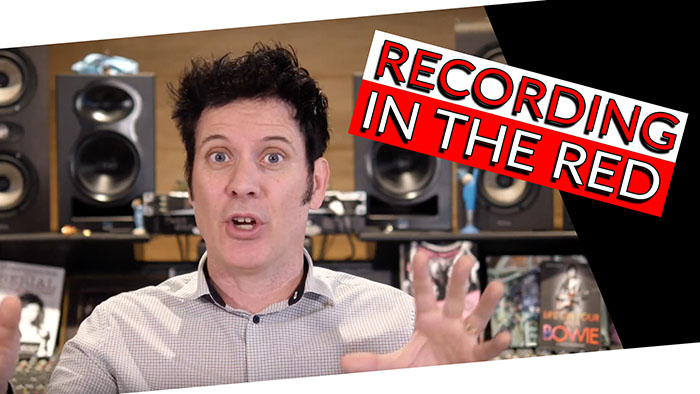We have some marvellous questions this week! They are all over the spectrum!
“What is your opinion on recording in the red? Should it be avoided at all times?”
I’ve seen so many videos, where they’re doing a mix and there’s an occasional red peak and somebody will be upset and can’t believe it! There’s a video with Cameron Webb where it was hitting red for a nanosecond and then about ten seconds later another nanosecond- I think this is where logic prevails – I’m opening a massive can of worms here.
This is my personal belief: the odd, occasional transient that hits the red for a nanosecond of a nanosecond is not going to mater in a million years – It just isn’t.
If you have a track where the snare transient occasionally hits the red then 20 seconds later it hits another for the shortest possible time, making it a total of five hits over the entire track, it is completely meaningless.
I would not under any circumstance turn the snare drum down 2db to get rid of five occasional peaks and then rebalance the whole mix, that just doesn’t make any sense what so ever.
The occasional very very short peak is never going to matter because you’re never going to hear it. However, if something stays in the red and is audibly clipping for even half a second- this is where I believe we have to apply logic. It’s not about science, it’s about what it sounds like. If it’s an incredibly short occasional transient that’s ok, but not if it’s long sustained clipping.
We had to mix something the other day that had a MOOG baseline on it- we clipped! We used the declipper. We did everything we possibly could. It was a line that was square, waved, and angular, sounded just horrific.
I have no idea how the person who recorded it didn’t hear that, but we had to mix it- that was our job. We used all kinds of different tools, declippers (ones that come with ProTools, Waves has some too), and we ended up using RX on it.
It was a lot of work and of course, the whole time we’re thinking maybe the ten-second part could have been recorded without it being clipped, but that’s the world we live in.
Sometimes this stuff goes largely unnoticed. For engineers who have been doing this for a while we might say “how could they have missed ten seconds of clipping.” I don’t personally know, but maybe they were tracking super loud, maybe tracking super fast, or maybe they were tracking four people at once, who knows.
I don’t know what the reasoning was but we had to fix it and of course it took ten times longer to fix it than redoing it. That’s an instance where it probably was red-red-red-red, the whole time – Occasional I can deal with.
Frankly, if you’re not hearing clipping then it’s irrelevant what it looks like, that’s the biggest answer to the question, but of course, if you are hearing it then do something about it.
We also cover the following questions during this episode of FAQ Friday!
•What height do you put the mic at for a very nasal singer to reduce the nasal quality?
• Any general tips for improving signal to noise ratio?
•When iii comes to produce and mix a backing track. To send to a singer, would you record many instruments before the vocals are added or just the basics. Maybe to give the singer more artistic freedom?
•Do. You usually work around the 150 range when high passing and low passing the bass D.I. and. Blend? Or can this point vary?
•Do you have a favourite key or keys to record/produce a song in?
